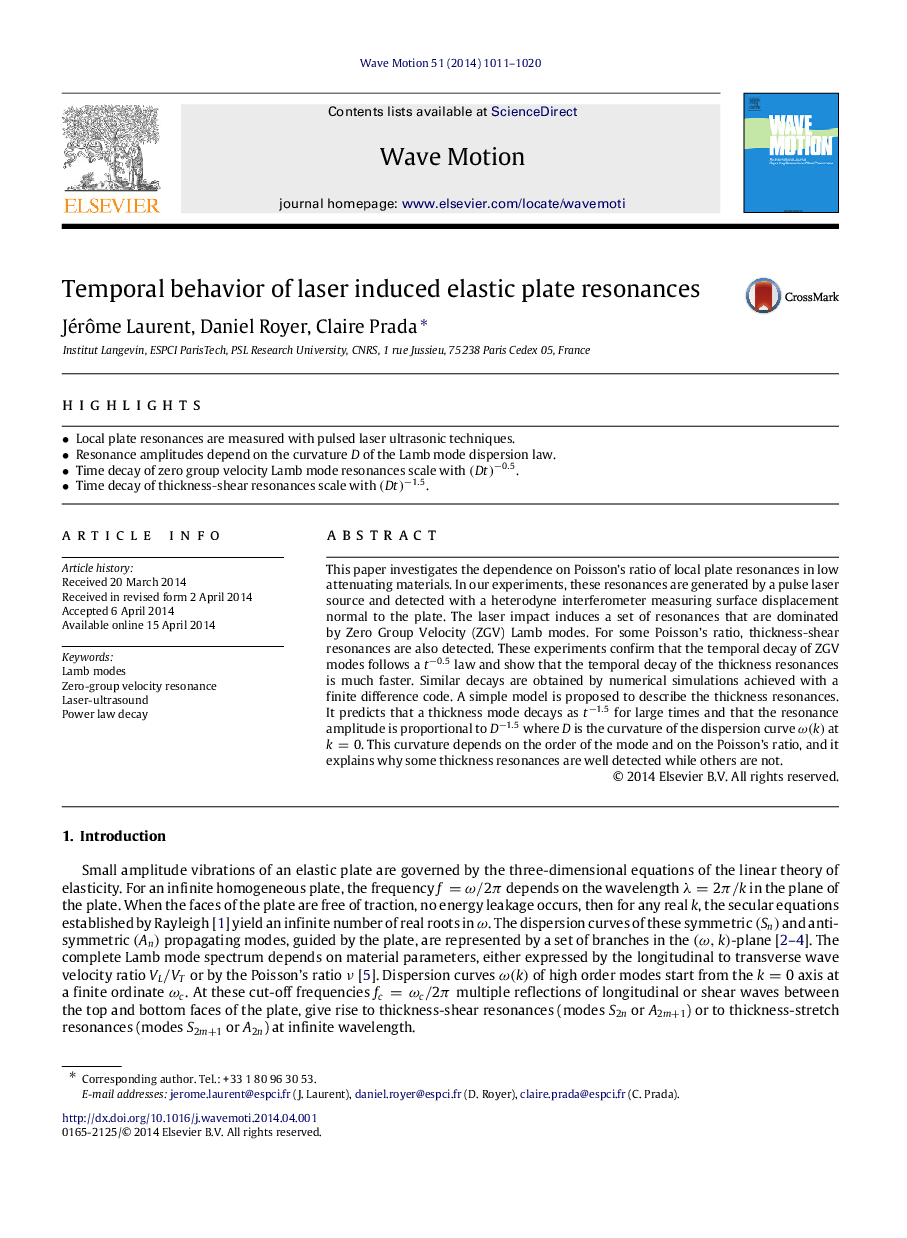| Article ID | Journal | Published Year | Pages | File Type |
|---|---|---|---|---|
| 1900530 | Wave Motion | 2014 | 10 Pages |
•Local plate resonances are measured with pulsed laser ultrasonic techniques.•Resonance amplitudes depend on the curvature DD of the Lamb mode dispersion law.•Time decay of zero group velocity Lamb mode resonances scale with (Dt)−0.5(Dt)−0.5.•Time decay of thickness-shear resonances scale with (Dt)−1.5(Dt)−1.5.
This paper investigates the dependence on Poisson’s ratio of local plate resonances in low attenuating materials. In our experiments, these resonances are generated by a pulse laser source and detected with a heterodyne interferometer measuring surface displacement normal to the plate. The laser impact induces a set of resonances that are dominated by Zero Group Velocity (ZGV) Lamb modes. For some Poisson’s ratio, thickness-shear resonances are also detected. These experiments confirm that the temporal decay of ZGV modes follows a t−0.5t−0.5 law and show that the temporal decay of the thickness resonances is much faster. Similar decays are obtained by numerical simulations achieved with a finite difference code. A simple model is proposed to describe the thickness resonances. It predicts that a thickness mode decays as t−1.5t−1.5 for large times and that the resonance amplitude is proportional to D−1.5D−1.5 where DD is the curvature of the dispersion curve ω(k)ω(k) at k=0k=0. This curvature depends on the order of the mode and on the Poisson’s ratio, and it explains why some thickness resonances are well detected while others are not.
